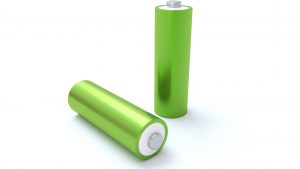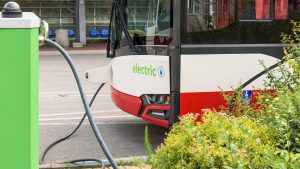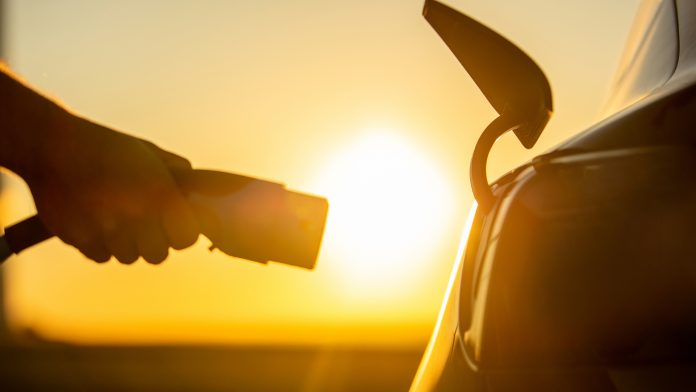Philippe Jacques, Secretary General of the Batteries European Partnership Association (BEPA), speaks to The Innovation Platform about some of the challenges facing the European batteries industry, from manufacturing to recycling.
The Batteries European Partnership Association (BEPA) aims to establish through BATT4EU – the European R&I Partnership on Batteries – the best innovation ecosystem in the world in Europe by 2030 in order to boost a competitive, sustainable and circular European battery value chain and to drive the transformation towards a carbon-neutral society. It is working to provide recommendations for calls for proposals within the Horizon Europe Work Programme, to implement and regularly update the Strategic Research and Innovation Agenda (SRIA) for batteries, to support and oversee the portfolio of projects funded under the Partnership Work Programmes, to create and reinforce networks in the batteries industry, to ensure synergies with other European Partnerships and initiatives, and to support the development of EU regulations on battery standards, safety, and sustainability, whilst actively promoting innovation uptake in the market.
The Innovation Platform’s Junior Editor, Lorna Malkin, spoke to BEPA’s Secretary General, Philippe Jacques, about how BEPA is hoping to achieve these goals and about some of the main challenges facing the European batteries industry, from manufacturing to recycling.
Can you outline the association’s main aims/objectives in terms of supporting Europe’s climate-neutral goals?
BEPA is the private side association of the Batteries European Partnership under Horizon Europe (named BATT4EU) – with the European Commission being on the public side. With around 145 members already on board, we want to gather the entire European batteries industry together, particularly those active in research and innovation, in order to achieve a competitive, sustainable and circular European battery value chain.
To truly achieve the objectives of the Green Deal, we need to ensure that performant battery technologies are affordable and can be widely deployed. We work to support Europe’s ambitions, as outlined by European Vice President Šefčovič and the European Battery Alliance, to achieve ‘green batteries’ via our R&I partnership between the Commission and BEPA.
What is the current state of the battery energy storage market in Europe? How has this developed over the past five years?
The energy storage market is in a transformation period. Until recent years, the batteries market was mainly driven by consumer electronic goods, which were the main market for rechargeable batteries. Now, however, this has changed so that the dominant markets are in mobility and stationary storage applications, and they will continue to grow. Indeed, we anticipate that by 2030 the mobility sector will represent over 80% of the demand for rechargeable batteries – not only for road vehicles, but also for other transport modes such as waterborne, off-road and some segments of air transport.
What are some of the challenges in commercialising and scaling up new battery technologies? How will the latest Batteries industry Regulation support this?
Firstly, it is important to keep in mind that we are in a global race, mainly with Asia, and so the first challenge is about competitiveness. We need to build a competitive European industry around the whole value chain, to be sustainable and more autonomous in the long term. We need to significantly improve the technical performance of batteries and reduce their cost, alongside addressing the carbon footprint of battery production, use and end-of-life management. This will involve developing new and better manufacturing technologies to support the European battery cells manufacturers who are currently investing billions in gigafactories. Battery cells manufacturing was identified as a weak segment in the battery value chain in Europe as we were essentially missing some big industry players.

A second important challenge concerns sustainability. The aforementioned concept of green batteries which is being promoted by Vice President Šefčovič is perhaps one of the most important aspects where Europe can really differentiate itself from Asian producers. It is key for batteries to minimise their global environmental footprint and guarantee a responsible sourcing of their raw materials. This includes improving, from the early conception steps, the recyclability (recycling-by-design approach) of battery materials, as well as the lifetime of batteries, including the development of second-life applications and the necessary associated business models, and also by improving the recycling processes and considering disruptive direct recycling solutions.
Another key challenge relates to the industrial upscaling of the technologies, which are currently being studied and developed. Europe is quite strong in research – it may not even be too much to say that the European research community is the strongest in the world. The issue, however, will be to translate this knowledge into business, by accelerating the uptake by industry of the promising technologies which are currently under development.
The final significant challenge certainly relates to the market uptake. It is not only about batteries’ performances or affordability here, but also charging infrastructures; there are still a lot of gaps in Europe that need to be addressed including at the political level. While our R&I partnership with the European Commission may be less focused on these aspects, we know how important it is to connect with those initiatives which are really dealing with how to facilitate this market uptake.
Can you outline some of the work BEPA is undertaking in support of the EU’s ambitions for a circular economy for lithium-ion batteries?
As I have mentioned, there is a lot of work still to be done. Sustainability is one of the top principles promoted by the association, in all of the work we do across the entire lifecycle of batteries. From raw materials processing to battery manufacturing, to recycling, all elements of the value chain must be designed with sustainability in mind in order to achieve the lowest environmental impacts possible. BEPA is working to ensure that these goals are systematically included in all of the topics proposed for funding by Horizon Europe under the BATT4EU partnership flag.

We want also to increase the focus being placed on the ability to recover all battery components at the end of life, and we hope to be able to initiate some R&I calls on developing new technologies for direct recycling (with ‘direct recycling’ referring to identifying a new technology that essentially allows for a shortcut into the circular economy; by being able to recover some of the active materials and reuse them directly and immediately). This is the kind of approach that will be developed moving forwards and we hope to see calls for projects in that direction emerging soon.
With regard to recycling and the re-use of battery materials, how will current processes need to change to make it easier and safer? How will recycling technologies develop?
Currently, there are essentially two main technologies – hydrometallurgy and pyrometallurgy – which are used for treating the ‘black mass’ obtained after all the battery components have been crushed. In addition to the ambitious direct recycling approach mentioned above, we would also like to improve these technologies and, if possible, identifying ‘softer’ approaches.
Alongside the sustainability element of battery recycling, there is a need to develop processes which will be more cost competitive, more efficient, and hopefully more economic which will also mean less reliance on new raw materials.
The recycling of batteries involves numerous steps – from collecting end of life batteries to sorting them, dismantling them, crushing them, and so on – and each of these steps can be improved. We therefore plan to work on each of them, in addition to contributing to the development of a battery passport which should improve and facilitate the sorting of batteries and avoid one batch of materials becoming contaminated from another which is not compatible. Improving things upstream will improve the process of recycling downstream.
Aside from lithium-ion batteries, what other energy storage technologies/applications are contributing to Europe’s decarbonisation goals? How do you see the battery energy storage market developing over the next decade?
Over the next ten years or so, the automotive market will really be the segment driving the growth and, indeed, the one that will most orientate the technology. However, we are seeing a lot of potential in other, lesser known or more limited markets – such as rail, air, and waterborne. We are also seeing a lot of potential in the transition from current technologies for off-road applications, such as forklifts for instance, or other tools and machines used for logistics, which become increasingly based on robotics and automated systems.
Another important market is stationary storage. This market will also benefit from the ongoing developments in the battery industry. The dream would be to have batteries in every home for storing energy generated by photovoltaic panels. Currently, this solution is not yet competitive enough for that to happen on a huge scale. Nevertheless, as the technologies progress I believe that we will see this area becoming a significant market. The demand for energy stationary storage is growing, of course not just at the individual consumer level but also at grid-scale, to address flexibility requirements of the grid that increasingly rely on intermittent renewable energy sources such as wind or solar.
Regarding battery technologies, today we have third generation lithium-ion batteries, and the next big move will probably be solid-state batteries; a game changer that we expect to come on the market in the next five or six years. Alongside this, there are numerous other technologies that already have niche applications and others which are still under development, such as (especially for stationary storage) sodium-ion, for example, and redox flow batteries, which are a totally different technology.
Philippe Jacques
Secretary General
Batteries European Partnership Association (BEPA)
info@bepassociation.eu
www.bepassociation.eu/
Please note, this article will also appear in the sixth edition of our quarterly publication.









